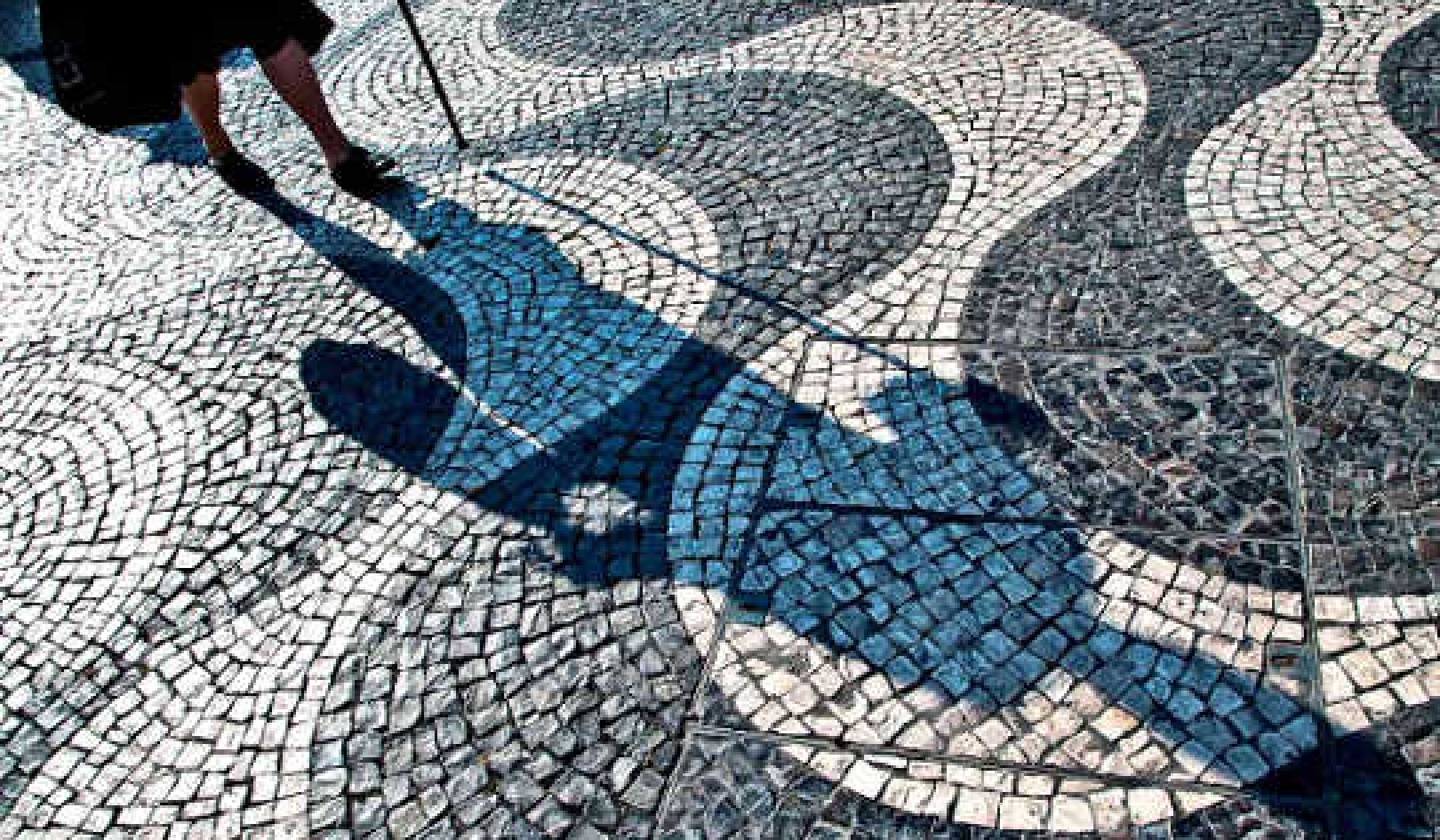
In this Article:
- How did the Fibonacci sequence originate, and who was Fibonacci?
- What are the key mathematical properties of the Fibonacci sequence?
- How does the Fibonacci sequence appear in nature, from plant growth to spiral formations?
- Why is the Fibonacci sequence significant in art and architecture?
- How is the Fibonacci sequence applied in finance, particularly in trading strategies?
- What role does the Fibonacci sequence play in technology, including algorithms and digital imaging?
- Are there criticisms and limitations to the use of the Fibonacci sequence?
Unlocking the Secrets of the Fibonacci Sequence in Nature and Beyond
by Robert Jennings, Innerself.com
I wrote this article especially for Pat Stinson, my good friend who lives on Cape Breton Island, Nova Scotia.
In the quiet corners of history, specific ideas emerge that resonate across time, bridging the gap between the ancient and the modern, the simple and the complex. One such idea is the Fibonacci sequence, a mathematical pattern transcending mere numbers and weaving into the fabric of nature, art, and human ingenuity. The Fibonacci sequence is more than just a series of numbers; it is a lens through which we can view the world, revealing patterns that connect us to the universe and each other.
The Origins of the Fibonacci Sequence
The story of the Fibonacci sequence begins with a man named Leonardo of Pisa, better known by his nickname, Fibonacci. Born in the 12th century in the Republic of Pisa, Fibonacci was a mathematician who traveled widely, gathering knowledge from the diverse cultures of the Mediterranean world. However, his most significant contribution to mathematics came from a simple problem he posed in his book "Liber Abaci," published in 1202.
In "Liber Abaci," Fibonacci introduced the Western world to the Hindu-Arabic numeral system but tucked away within its pages was a seemingly innocuous problem about rabbit population growth. This problem later introduced a sequence of numbers bearing his name: 0, 1, 1, 2, 3, 5, 8, 13, and so on. Each number in the sequence is the sum of the two preceding numbers, creating a pattern that grows infinitely.
At its core, the Fibonacci sequence is a simple recursive pattern. Starting with 0 and 1, each subsequent number is formed by adding the two numbers before it. While this might seem straightforward, the sequence reveals more profound mathematical properties that have fascinated scholars for centuries.
One of the most intriguing aspects of the Fibonacci sequence is its connection to the Golden Ratio, a mathematical constant approximately equal to 1.618. The Golden Ratio, often called the divine proportion, is a unique number found by dividing a line into two parts so that the longer part divided by, the minor part is also equal to the whole length divided by the longer part. As the Fibonacci sequence progresses, the ratio between consecutive Fibonacci numbers approaches the Golden Ratio, creating a harmonious balance throughout nature, art, and architecture.
Fibonacci in Nature
In its infinite wisdom, nature often follows the path of least resistance, seeking balance and efficiency. The Fibonacci sequence, a symbol of nature's inherent beauty, reflects this natural tendency, appearing in plants' arrangement of leaves, petals, and seeds. For instance, the spiral patterns of sunflower seeds, the arrangement of leaves around a stem, and the structure of pinecones all follow the Fibonacci sequence, showcasing the awe-inspiring harmony in nature's design.
This pattern allows plants to maximize their exposure to sunlight and rainfall, demonstrating nature's inherent efficiency. The Fibonacci sequence also ensures that each new leaf or seed is positioned at the optimal angle from its predecessor, promoting healthy growth and minimizing competition for resources.
The Fibonacci sequence is also visible in the prevalent spiral shapes throughout nature. From the shells of nautilus and ammonite fossils to the swirling patterns of hurricanes and galaxies, these spirals follow the Fibonacci sequence, creating aesthetically pleasing and structurally sound forms.
These spirals represent a balance between expansion and containment, embodying the dynamic equilibrium that governs much of the natural world. The mathematical precision of the Fibonacci sequence provides a blueprint for these natural forms, revealing the underlying order in what might otherwise seem like chaotic patterns.
Fibonacci in Art and Architecture
The connection between the Fibonacci sequence and the Golden Ratio extends beyond mathematics and nature; it has also profoundly influenced art and architecture. The Golden Ratio, often called the "Divine Proportion," has been used by artists and architects for centuries to create balanced and beautiful works. This practical application of mathematical principles in creating art and architecture can enlighten.
One of the most famous examples of the Golden Ratio in art is Leonardo da Vinci's "Vitruvian Man," which explores the proportions of the human body in this mathematical constant. Similarly, the Parthenon in Athens, the Great Pyramids of Giza, and many other architectural marvels incorporate the Golden Ratio into their design, creating structures that resonate with harmony and proportion.
Similarly, the Dutch painter Piet Mondrian, known for his abstract work, is said to have used the Golden Ratio to structure the geometric elements in his paintings, achieving a sense of balance that resonates with viewers. Salvador Dalí, the surrealist painter, explicitly incorporated the Golden Ratio in his work "The Sacrament of the Last Supper," where the dimensions of the canvas and the placement of critical elements align with this mathematical constant. These artists, among others, demonstrate how the Fibonacci sequence and Golden Ratio have been woven into the fabric of art history, influencing the way we perceive beauty and order in visual compositions.
The influence of the Fibonacci sequence and the Golden Ratio extends into the modern era, where they continue to inform design and architecture. The Fibonacci sequence creates visually appealing and naturally balanced layouts in graphic design. Websites, logos, and furniture designs often incorporate the Golden Ratio to achieve a sense of proportion and aesthetic harmony. This connection between past and present through timeless mathematical principles can make the audience feel a sense of continuity and evolution.
In architecture, Fibonacci-inspired designs are evident in the layout of buildings, the proportions of rooms, and the placement of windows and doors. The sequence's ability to create a natural sense of balance makes it a valuable tool for architects seeking to blend form with function, ensuring that structures are beautiful and practical.
In landscaping, the Fibonacci sequence can be used to design aesthetically pleasing and naturally harmonious spaces. By applying Fibonacci principles, landscape architects can arrange plants, trees, and other elements to reflect the inherent patterns found in nature. For example, the spiral patterns seen in flower petals or the branching of trees can be mimicked to create gardens that feel organic and balanced. Using Fibonacci numbers can also guide the placement of focal points, pathways, and garden beds, ensuring the overall layout is visually appealing and flows naturally. By incorporating Fibonacci-based designs, landscapers can create beautiful spaces that evoke a sense of order and tranquility that resonates with the natural world.
Many unknowingly use principles related to the Fibonacci sequence, mainly through concepts like the Rule of Threes, often applied in design, writing, and daily decision-making. The Rule of Threes suggests that a trio of events or objects is more satisfying, effective, and memorable than other numbers, which aligns with the natural tendency towards balance and proportion in the Fibonacci sequence. For instance, in storytelling, jokes, and speeches, the structure of "beginning, middle, and end" reflects this rule, creating a rhythm that resonates with audiences. Similarly, in interior design, arranging objects in groups of three (such as three candles on a table or three pieces of art on a wall) often results in a visually pleasing composition. Although these practices aren't directly tied to the Fibonacci sequence, they echo its underlying principles of balance and harmony, showing how our innate sense of order often leads us to follow patterns naturally aligned with this mathematical phenomenon, even without conscious awareness.
Fibonacci in Finance
Beyond art and nature, the Fibonacci sequence has found a finance home. It is used as a tool for technical analysis in trading. Traders and investors use Fibonacci retracement levels to identify potential support and resistance levels in an asset's price, helping them make informed decisions about when to buy or sell.
In Elliott Wave Theory, the Fibonacci sequence is crucial in predicting market movements and identifying potential turning points in financial markets. Ralph Nelson Elliott's theory posits that market prices move in predictable, repeating cycles driven by investor psychology. These cycles are divided into waves, and Fibonacci ratios are used to determine the length and duration of these waves.
Specifically, Fibonacci retracement levels help traders identify areas where a correction might end within a more significant trend. At the same time, Fibonacci extensions project future price movements. By applying these Fibonacci principles, traders can make informed decisions about when to enter or exit the market, enhancing their ability to navigate the complexities of financial markets.
Fibonacci retracement levels are drawn by identifying the high and low points of a price movement and dividing the vertical distance by the key Fibonacci ratios of 23.6%, 38.2%, 50%, 61.8%, and 100%. These levels indicate areas where the price may reverse or consolidate, providing traders with valuable insights into market trends.
Fibonacci extensions, another tool in technical analysis, predict future price movements by projecting the sequence beyond the current price range. These extensions help traders set profit targets and manage risk, offering a mathematical framework for navigating the uncertainties of the financial markets.
The Fibonacci sequence is used in risk management, portfolio strategies, and technical analysis. It provides a basis for determining position sizes, ensuring that investments are proportionate to the level of risk involved. By adhering to Fibonacci ratios, traders can avoid overexposure to any single asset, protecting their portfolios from significant losses.
Portfolio managers also use Fibonacci ratios to balance their holdings, creating a diversified mix of assets that align with their risk tolerance and investment goals. The sequence's ability to guide decision-making in the volatile world of finance underscores its versatility and enduring relevance.
Fibonacci in Technology
The Fibonacci sequence's influence extends into technology, where it plays a crucial role in computer science and algorithm design. One of the most well-known applications is the Fibonacci search technique, an efficient method for finding an element in a sorted array.
Fibonacci numbers are also used in the design of Fibonacci heaps, a type of data structure that supports a variety of operations, including finding the minimum element, inserting elements, and merging heaps. Fibonacci heaps are particularly efficient for network optimization algorithms, making them valuable tools in telecommunications and logistics.
In digital imaging, the Fibonacci sequence is employed in fractal compression techniques, which reduce the size of images without sacrificing quality. These techniques are based on the self-similarity of fractals, which can be described using Fibonacci numbers, making them ideal for compressing complex photos and textures.
The sequence also finds application in sound engineering, which designs acoustically optimized spaces and analyzes sound waves. The natural harmony of Fibonacci ratios ensures that sound is evenly distributed throughout a space, enhancing the listening experience in concert halls, recording studios, and other acoustic environments.
Fibonacci in Popular Culture
The Fibonacci sequence has captured the imagination of writers and filmmakers, who have incorporated it into their works as a symbol of mystery, balance, and the interconnectedness of all things. In literature, the sequence has appeared in novels and poems, often representing the unfolding of a complex narrative or the hidden order within chaos.
In the film "The Da Vinci Code," the Fibonacci sequence is used as a cryptic code, emphasizing its association with hidden knowledge and ancient wisdom. Documentaries and TV shows have also explored the sequence's applications, highlighting its presence in everything from nature documentaries to crime dramas.
The Fibonacci sequence's appeal extends to the world of puzzles and games, where it is used to create challenging brain teasers and strategy games. Mathematical puzzles based on Fibonacci numbers encourage players to think critically and explore the sequence's properties, offering entertainment and education.
In board games and game theory, Fibonacci numbers are often used to develop strategies that maximize efficiency and minimize risk. The Fibonacci sequence inspires creativity and innovation in competitive gaming or recreational puzzles.
Criticisms and Limitations
While the Fibonacci sequence is undoubtedly a powerful and intriguing mathematical concept, it is not without its critics and limitations. Some researchers and skeptics caution against overinterpreting its significance, particularly in nature and finance.
The tendency to see Fibonacci patterns everywhere can lead to confirmation bias, where observers may overlook inconsistencies or force-fit data to match the sequence. In nature, while Fibonacci-like patterns are observed, they are often approximations rather than exact matches, and alternative mathematical models may sometimes provide more accurate descriptions of natural phenomena.
In fields such as art history and archaeology, the intentional use of the Golden Ratio (closely related to the Fibonacci sequence) in ancient works is debated. Some scholars argue that its perceived presence may result from retroactive analysis rather than the original intent.
Similarly, in finance, while Fibonacci retracements are popular tools in technical analysis, their effectiveness and predictive power in complex market systems remain points of contention among experts. It's crucial to approach the Fibonacci sequence as a fascinating mathematical tool with some practical applications rather than a universal key to understanding the world.
Recognizing these limitations allows for a more balanced appreciation of the sequence's role in various disciplines, encouraging critical thinking and openness to alternative explanations in studying patterns and proportions across different fields.
Article Recap
The Fibonacci sequence, a simple yet profound pattern, influences various aspects of our world, from the spirals in nature to the designs in art and architecture. It has practical applications in finance, guiding traders and investors, and plays a significant role in technology and digital imaging. Understanding the Fibonacci sequence and its many uses can deepen our appreciation for the interconnectedness of mathematics, nature, and human creativity.
About the Author
 Robert Jennings is co-publisher of InnerSelf.com with his wife Marie T Russell. He attended the University of Florida, Southern Technical Institute, and the University of Central Florida with studies in real estate, urban development, finance, architectural engineering, and elementary education. He was a member of the US Marine Corps and The US Army having commanded a field artillery battery in Germany. He worked in real estate finance, construction and development for 25 years before starting InnerSelf.com in 1996.
Robert Jennings is co-publisher of InnerSelf.com with his wife Marie T Russell. He attended the University of Florida, Southern Technical Institute, and the University of Central Florida with studies in real estate, urban development, finance, architectural engineering, and elementary education. He was a member of the US Marine Corps and The US Army having commanded a field artillery battery in Germany. He worked in real estate finance, construction and development for 25 years before starting InnerSelf.com in 1996.
InnerSelf is dedicated to sharing information that allows people to make educated and insightful choices in their personal life, for the good of the commons, and for the well-being of the planet. InnerSelf Magazine is in its 30+year of publication in either print (1984-1995) or online as InnerSelf.com. Please support our work.
Creative Commons 4.0
This article is licensed under a Creative Commons Attribution-Share Alike 4.0 License. Attribute the author Robert Jennings, InnerSelf.com. Link back to the article This article originally appeared on InnerSelf.com































